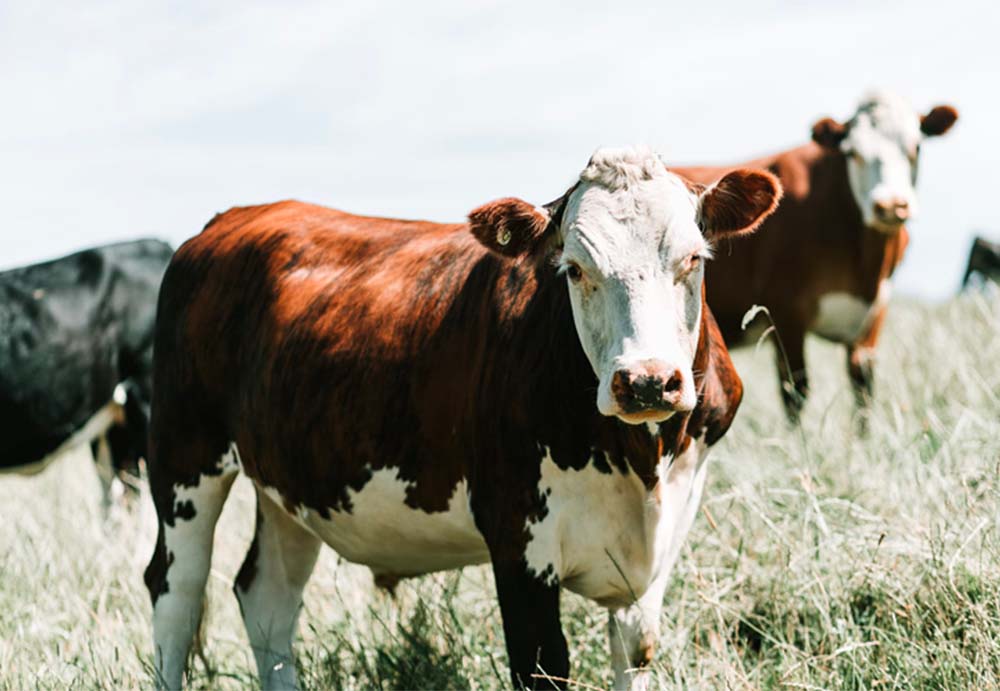What is Grass Tetany?
Grass tetany is a fatal metabolic disorder which is caused by low levels of Magnesium (Mg) in the blood.
The disorder is most common in lactating cows, however, can occur in sheep, goats, and horses.
The worst months for Grass Tetany are from June until August due to climatic conditions at this time. Lush rapid growing pastures in these seasons pose greater risk for grass tetany as there is a lack of roughage base for cows usually in mid lactation.
Magnesium is needed for correct functioning of the nervous system. Having low levels of Magnesium results in the muscles not being able to function and ultimately if not treated can cause death.
What are the signs?
Animals suffering from grass tetany are often found dead. A common sign to observe from the dead animal is froth from the mouth and nose, and the ground being scuffed from where the cow’s legs thrashed back and forwards (paddling) before death. Deaths usually occur in winter when the weather is overcast, cold, wet and windy.
Early signs include:
- Excitability with muscle twitching (Specifically the face and ears)
- Exaggerated awareness
- Stiff gate
- Aggressive temperament
To be certain of a diagnosis, a veterinarian may use blood samples to determine magnesium and calcium levels in conjunction with urine samples to test of magnesium.
Causes
A cow’s magnesium level depends mainly on the balance between the amount absorbed from the rumen and that depleted through milk production and passed out in the dung.
Grass tetany is more likely to occur under these conditions:
- Cows greater than 5 years old in the first 3 to 4 months of lactation
- Grass dominant pastures from late autumn to early spring
- Pastures high in potassium or nitrogen (may occur naturally or through application of fertilizer)
- Pasture of less than 1,000kg DM/ha
- Pasture with potassium levels greater than 35g/kg dry matter (High potassium intake reduces magnesium absorption)
- Pastures providing sodium intake less than 2g/kg dry matter
- Pastures providing low roughage intake
- Sudden changes in feeding pattern or any factor that disrupts grazing (e.g. to mark calves, diet change to lush green feed)
- very fat cows with a fat score of 3.5 or more
- very thin cows with a fat score of 2 or less
Treatment
When one or more cases of diagnosed grass tetany have occurred in the herd immediate treatment and prevention should take place.
A cow that has gone down will require an immediate injection of a 4 in 1 mineral solution pouch. After the cow has recovered from the initial episode, she should be given an oral treatment of Causmag® or Epsom salts to prevent a relapse.
The following sources of magnesium should be provided to prevent relapse:
- magnesium oxide powder for dusting onto feed or pasture
- magnesium lick blocks (Placed in high traffic areas)
- slow-release capsules (usually last up to 80 days)
- magnesium sulphate or soluble magnesium chloride added to hay or silage
- adding magnesium to concentrates or pellets.
These products are available from your veterinarian, feed supplier or rural supplies company.
Prevention
Prevention is the best method to avoid losses from grass tetany. Having a plan set in place before deaths occur is vital in reducing economic losses.
Management actions:
- Assess the percentage of cows over 5 years of age in your herd that will be 3-4 months into lactation and ensure they have access to good quality roughage and hay
- Cows younger than 5 years can also get grass tetany however other factors such as high potassium or low sodium, calcium or phosphorus are the likely cause
- Ensure that cows in the late dry period and early lactation have adequate magnesium in their diets and consider preventative supplementation
- Moving lactating cows to high legume and high dry matter pastures
- Provide salt if a natural source is not available
- Monitor the condition score of cattle, taking note if the cattle lose weight through winter (high risk months)
- Reduce stress and any period off feed in your herd, such as having ‘at risk’ mobs during the grass tetany season in a sheltered paddock and avoiding unnecessary yarding and handling
- Evaluate paddocks on pasture/crop type and conducting soil testing
- Avoid overuse of potash in your fertiliser programs as potassium and nitrogen applications increase risk of tetany disorder
- Correct soil acidity with lime or dolomite
- Treatment of hay rolls with magnesium sulphate
Further Resources
Agriculture Victoria’s website on Grass Tetany
Click here to download the PDF version.
For further information, please contact the VFF Livestock Group on 1300 882 833 or by email [email protected]
Disclaimer: All care is taken in the preparation of the information and published materials produced by the Victorian Farmers Federation (VFF) including but not limited to errors, defects or omissions in the information provided. VFF does not make any representations or give any warranties about the accuracy, reliability, completeness, or suitability for any particular purpose in the preparation of the information and published materials. This publication is intended for general information purposes only and does not constitute financial, legal, investment, production, or marketing advice. To the maximum extent permitted by law, the VFF and all persons acting on behalf of the VFF in preparing documents, are excluded from all and any liability for any loss or damage of any kind arising in relation to this publication including any reliance on the information contained herein.
